The verdict: The 2018 Hyundai Sonata is not a full redesign, but this quiet, comfortable sedan has significantly improved in looks, interior feel and driving dynamics.
Versus the competition: The 2018 Sonata is still mid-pack in many ways, but it’s hard to beat its value in features for the dollar and class-leading warranty coverage.
The mid-size sedan was once the bread and butter of U.S. car sales. That was especially true for Hyundai and its Sonata, which put the brand on the map in the U.S. Now, even scrambling to offer more SUVs, Hyundai hasn't forgotten the Sonata sedan, which has been updated for 2018 as it faces new competition.
One focus of this mid-cycle refresh of the Sonata was to put some pizzazz back into a design that was watered down in the seventh generation's 2015 debut. But the interior and chassis also got tweaks that make the car more satisfying as its competition heats up: The big dogs of the mid-size class, the Toyota Camry and Honda Accord, have both been redesigned for 2018.
Hyundai also reconfigured the Sonata's trims and equipment to double down on value — a core appeal of the Sonata and the No. 1 thing mid-size buyers look for, according to Hyundai research. But rivals have upped their game, too: While the Sonata's features for the buck helped the 2015 beat nine rivals in Cars.com's $27,000 Midsize Sedan Challenge, just a couple of years later, it finished mid-pack versus eight rivals in the 2016 Midsize Sedan Challenge.
In a specific play to its value roots, the 2018 Sonata adds a new, well-equipped SEL trim level priced for budget-minded families that's expected to become the best-selling trim. You can now also get the sportier looks and interior of a Sport model in a cheaper version without the turbocharged engine. The price for a fully loaded Sonata has also been cut.
Hyundai showed off a redone 2018 Sonata on freeways and winding mountain roads around San Diego (per company policy, Cars.com pays for its travel and lodging at such events). We drove new SEL and Limited versions with the base engine as well as a Sport 2.0T turbo model, all of which are for sale now.
A higher-mileage turbo 1.6-liter Eco model will also return late this year as a 2018 model, and updated 2018 versions of the Sonata hybrid and plug-in hybrid will arrive early in 2018.
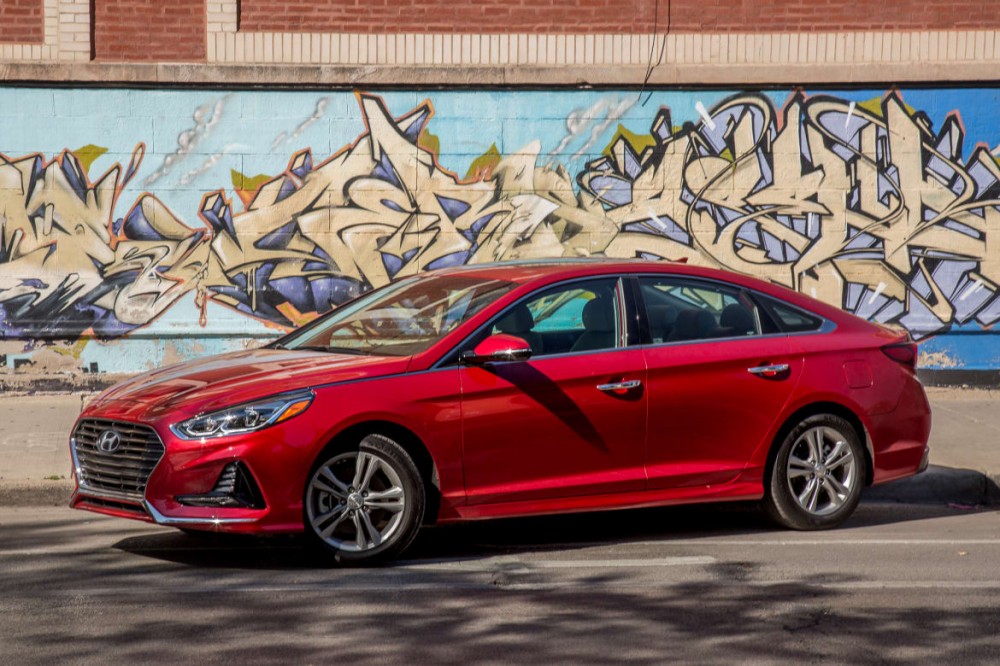
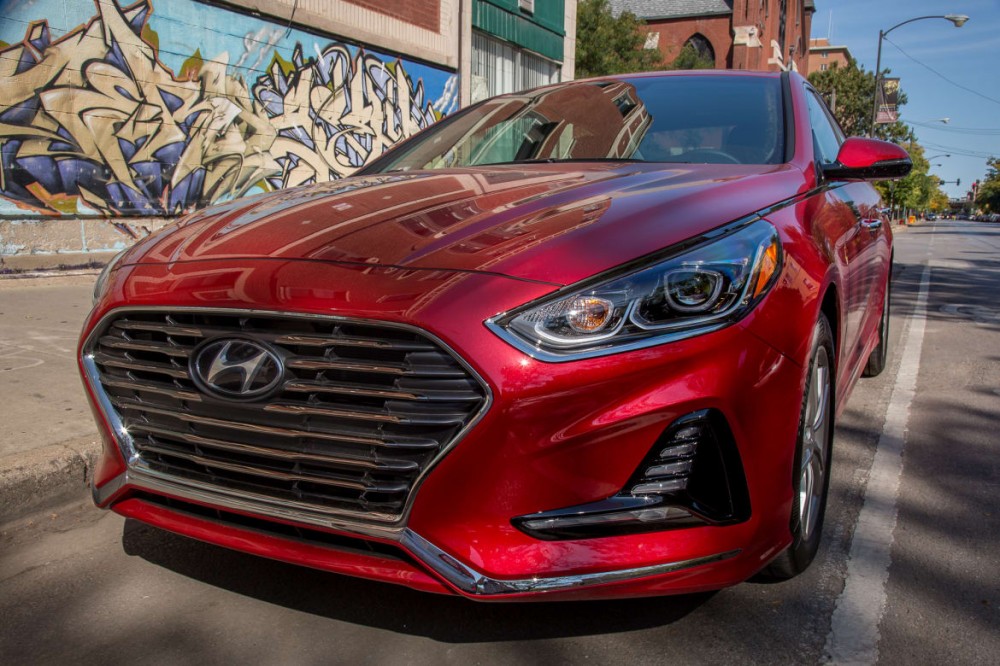
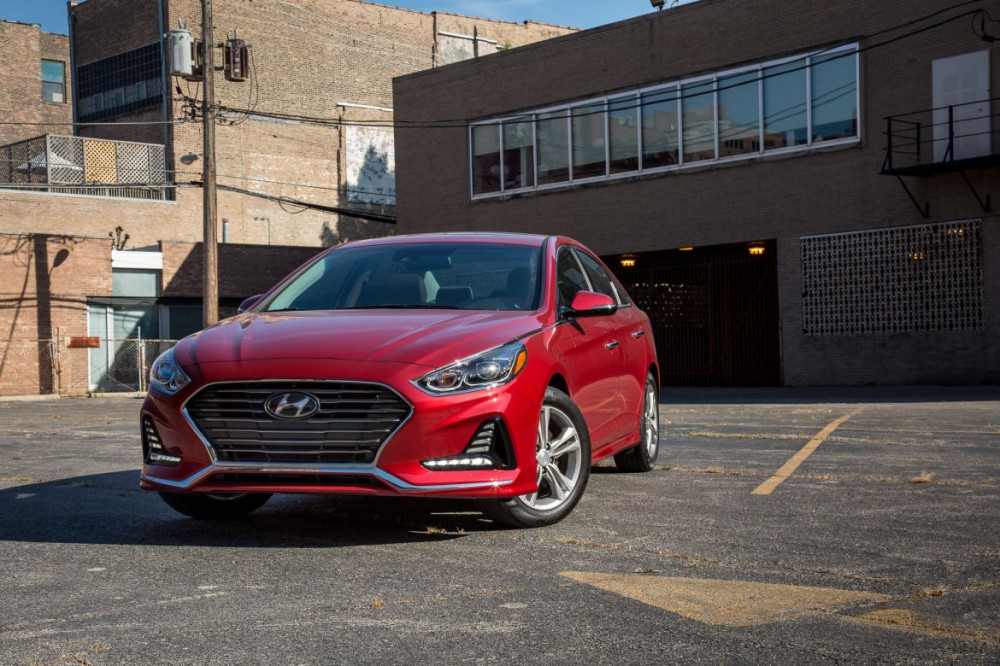
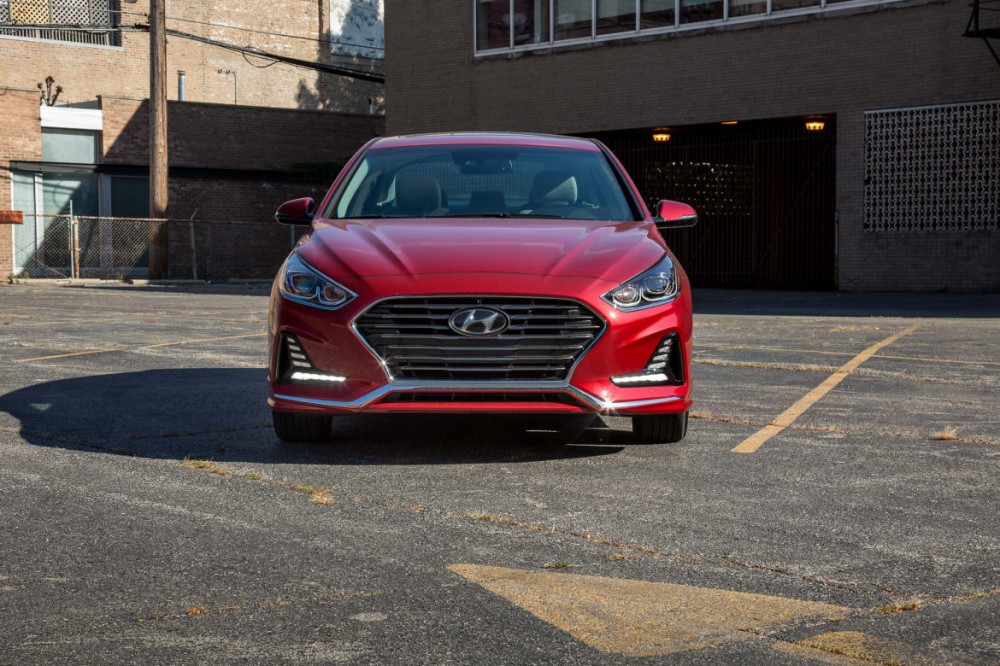
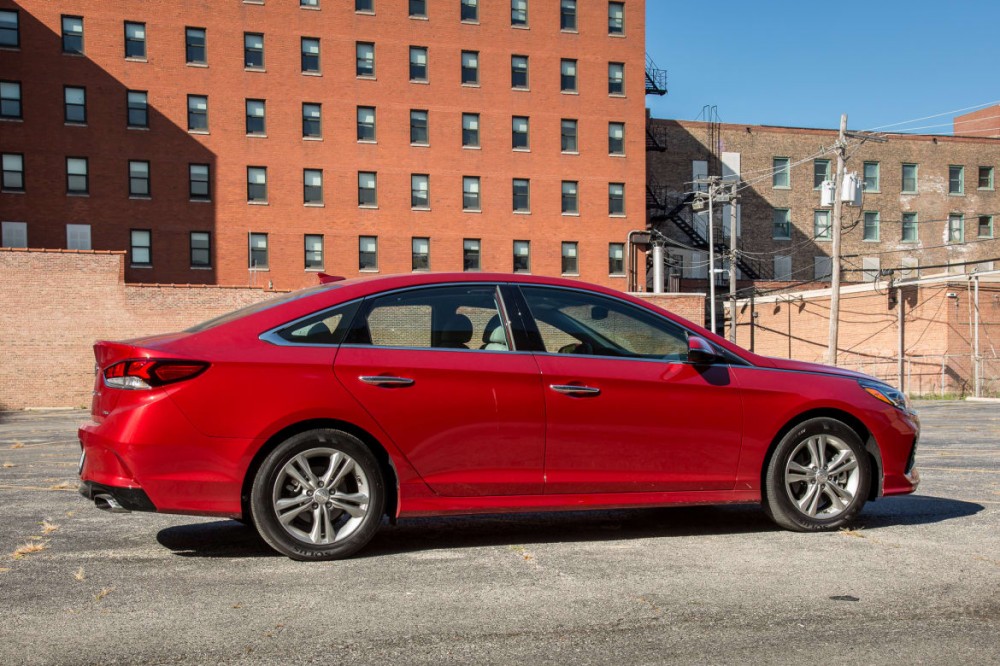
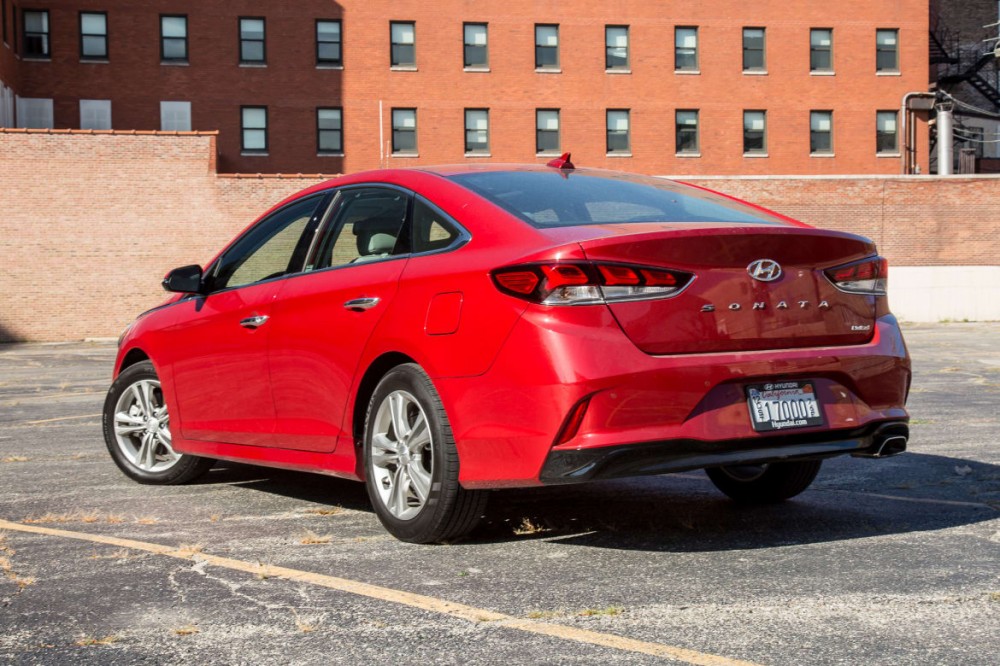
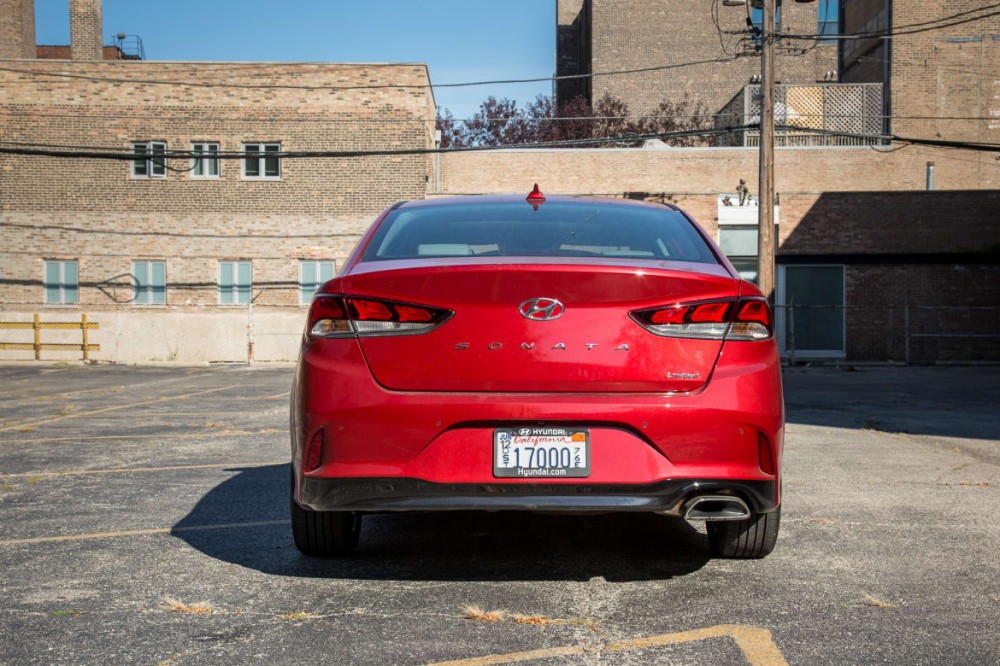
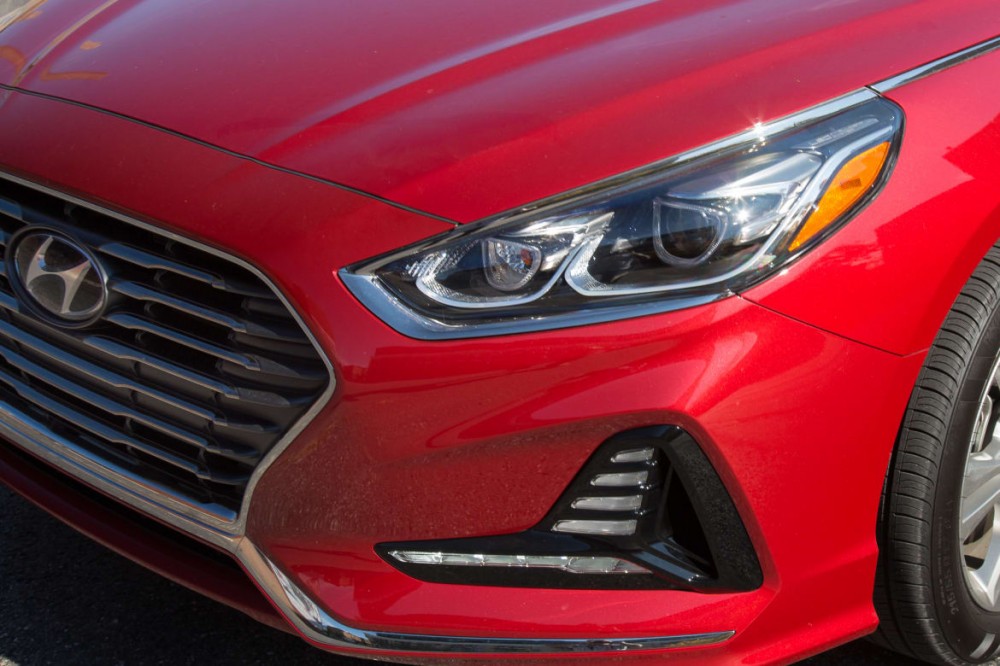
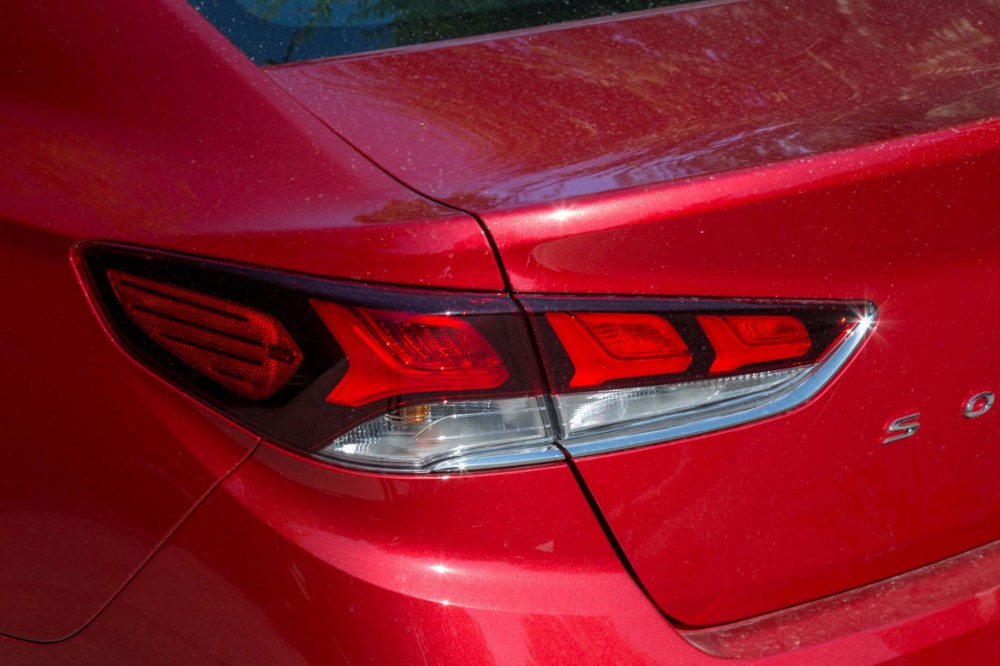
Trying to Recapture the Magic
Hyundai said one of its design goals was to recapture the magic of the swoopy 2011 Sonata. Its design raised the bar among then-appliance-like family sedans, but it was dialed back for 2015. For 2018, the front end is new from the windshield forward, and the lower side body and rear end are redone, as well. A new version of Hyundai's cascading grille — shaped to echo the pouring of molten steel — takes the Sonata's face in a more vertical direction, accentuated by vertical LED daytime running lights and stronger sculpting in the hood. A lower bumper that Hyundai calls a "catamaran" design pulls the eye down and away, while reshaped headlight pods stretch up and away. Reshaped LED taillights extend a character line running from the front wheel, while the lower rear bumper echoes the catamaran look, including dual chrome exhaust tips for the Sport and turbo 2.0-liter models. The overall effect may not be "wow," but it is stronger and more upscale than before.
Upgrades inside are subtler, but they make for a better cabin. A small but pleasing design change is a new center display and controls. The standard 7-inch touchscreen (8-inch with optional navigation) is slightly higher now, better positioned to see and reach while driving. Hyundai kept a welcome array of shortcut buttons and audio and climate knobs, but gave them a cleaner design and improved feel. It's a pleasing interior overall, though there's still a lot of grained plastic; it's not quite a match for the leaders in the pool of rapidly improving mainstream sedan interiors, such as the Mazda6 and (yes) the new Camry. Even the Subaru Legacy — no fashionista — has upped its game inside for 2018.
The front seats were quite comfortable as the miles rolled up; they're bolstered well for winding roads. The top Limited trim's leather looked and felt good, and the SEL's standard cloth is also of good quality, with interesting shaping and stitching (and the cloth was not unwelcome on a hot desert day).
The rear seat is comfortably padded and roomy, if not a match for the limo-like backseat of Volkswagen's Passat. The Sonata's coupelike roofline left enough headroom for a 6-foot-2 adult. The rear seat folds in a 60/40 split for extra cargo space in addition to the large, 16.3-cubic-foot trunk. That rivals the 2018 Accord's 16.7 cubic feet and beats the redesigned Camry's 15.1.
Hyundai kept a welcome array of shortcut buttons and audio and climate knobs, which also manage to have a cleaner design and improved feel.
The interior was impressively quiet, with little intrusion of engine or road noise in the city, on the freeway or even on the rough asphalt of rural desert roads.
Open-air fans take note: Gone for 2018 is the available panoramic moonroof that gave the Sonata's interior a wide-open, airy feel. It's been dropped in favor of a smallish (and cheaper) conventional rectangle.
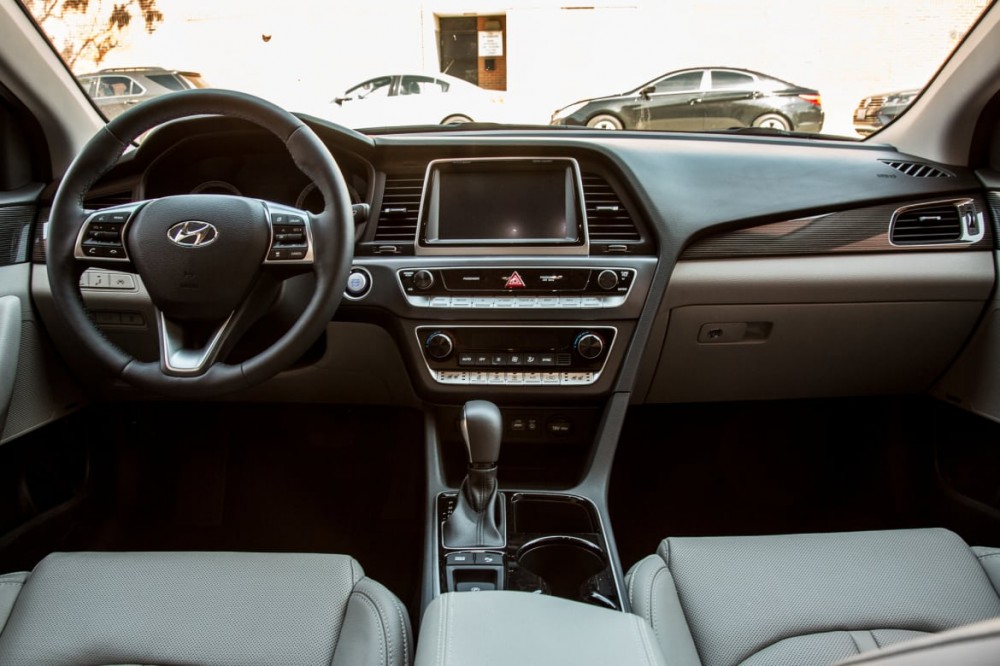

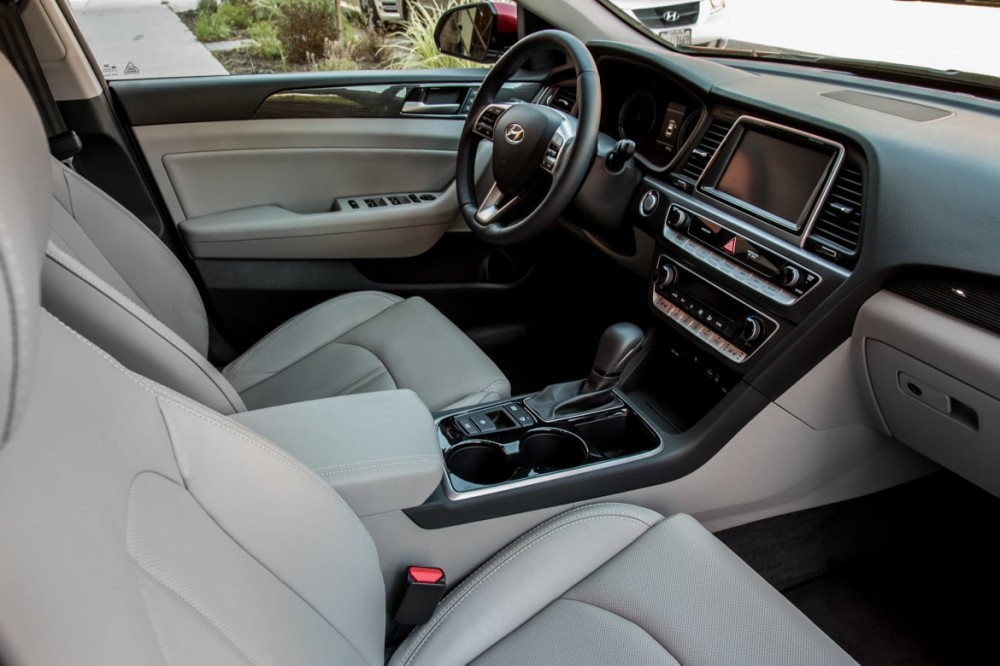
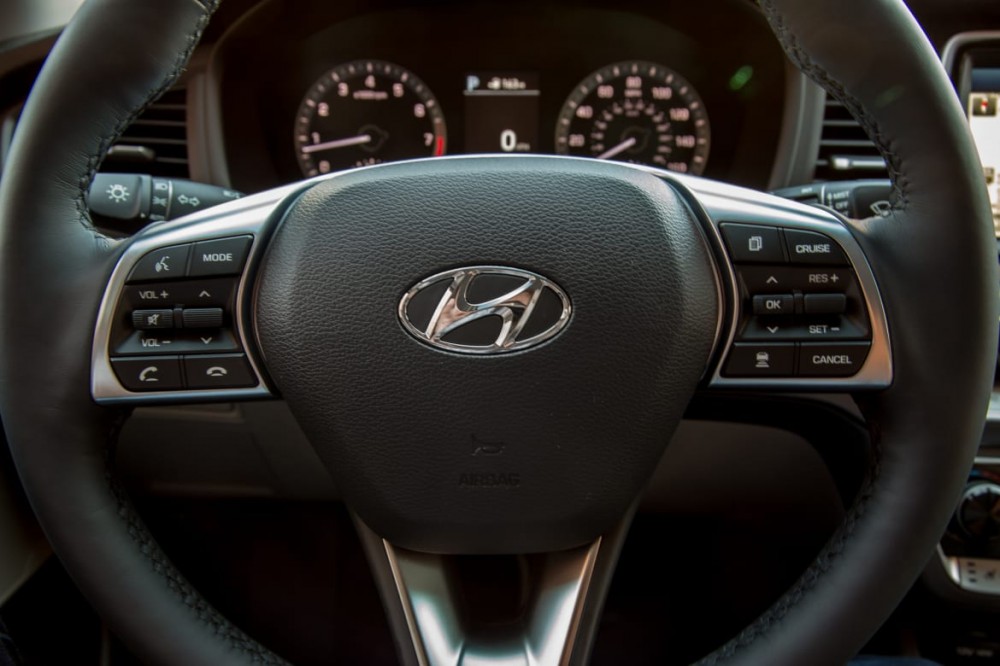
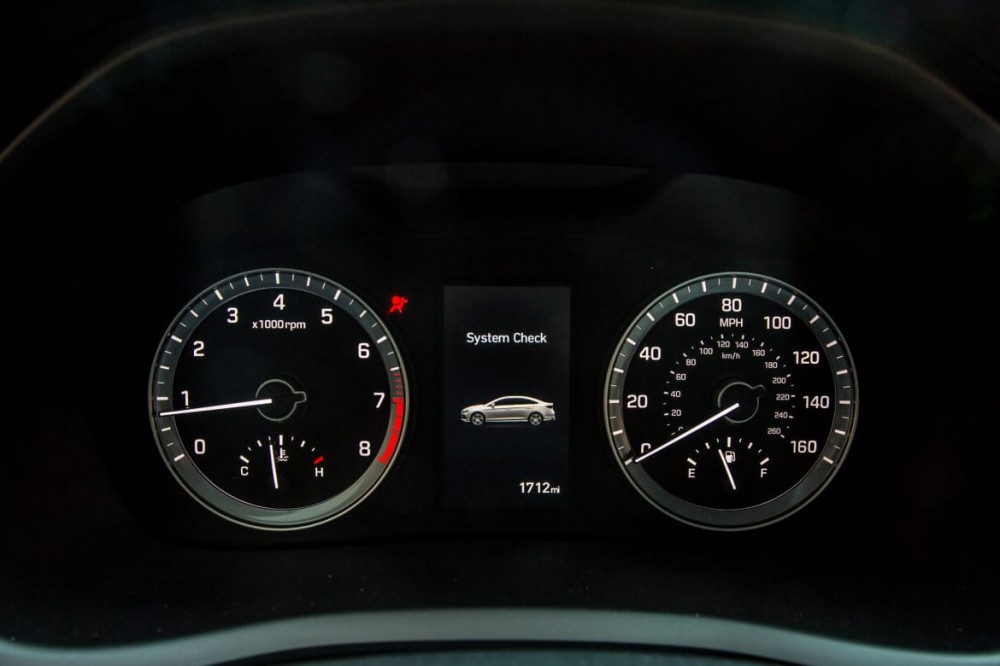
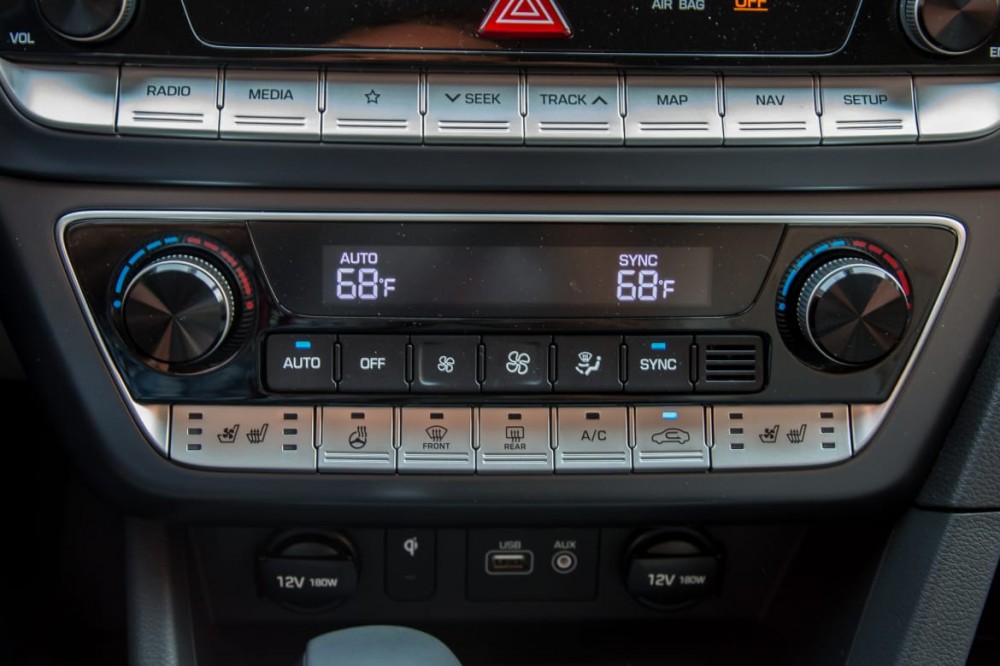
Improved Driving Dynamics
The Sonata already combined a smooth ride with competent handling. Now, the 2018's upgraded rear suspension links and bushings improve dynamics while retaining a smooth ride and balance reminiscent of a premium car. Increased component stiffness and new tuning also deliver better steering response and on-center feel. The Sonata is no sports car, but it felt agile and confident while carving up twisting mountain roads.
Turbo models get added grip from new Michelin rubber on 18-inch alloy wheels; base-engine models get 16s or 17s. Handling doesn't quite match the tied-down feel of the benchmark Mazda6 or Ford Fusion sedans, but overall balance is better than most in the class. (We have yet to road-test the 2018 Camry and Accord.)
Both engines we drove were quiet even when pushed, and their transmissions went about their business competently. The Sonata's carryover 185-horsepower, 2.4-liter four-cylinder base engine, paired with a six-speed automatic, gets you around with no fuss (or thrills). It should satisfy most buyers and is easier on the wallet, with EPA-rated mileage of 25/35/28 city/highway/combined for most models.
But if you enjoy driving and are OK with a mileage drop to 23/32/26 mpg, your choice should be the 245-hp, turbocharged 2.0-liter four-cylinder that powers the Sport 2.0T and Limited 2.0T. Also a carryover engine, for 2018, it's mated to a new eight-speed automatic with manual mode and paddle shifters. A 34 percent greater gear ratio spread versus the former six-speed is a better fit for the turbo, giving it both more punch off the line and quieter high-speed cruising. Downshifts were quick and positive, and the middle ratios were well-spaced. It's a good mating of performance and value — though if you want more zip and are willing to pay for it, the new Camry, for example, offers a trim with a 301-hp V-6 that delivers comparable fuel mileage. The Fusion offers a thirstier but much sportier 325-hp, 2.7-liter EcoBoost V-6 with all-wheel drive. Compare mileage ratings here.
Sonatas offer drive modes that alter gas-pedal response, transmission settings and steering: Eco, Sport, Comfort and (in 2.0T versions) Smart, which mixes and matches based on your driving style. I kept the cars I drove in Sport most of the time; the others seemed too quick to shift up to higher gears — no doubt a nod to fuel economy.
If that's your priority, the highest-mileage Sonata models are still to come. The Eco with a turbocharged 1.6-liter will return for 2018 but was not yet available to test. I drove the previous Eco model and found it to be more fun than the base 2.4-liter engine thanks to more low-end torque and its seven-speed, dual-clutch automatic transmission. The Eco will continue to be just a niche model for budget buyers, Hyundai says, offered only in bare-bones form (it's the equivalent of an SE trim but with a different engine).
Early next year, updated 2018 Sonatas with hybrid and plug-in-hybrid powertrains will arrive.
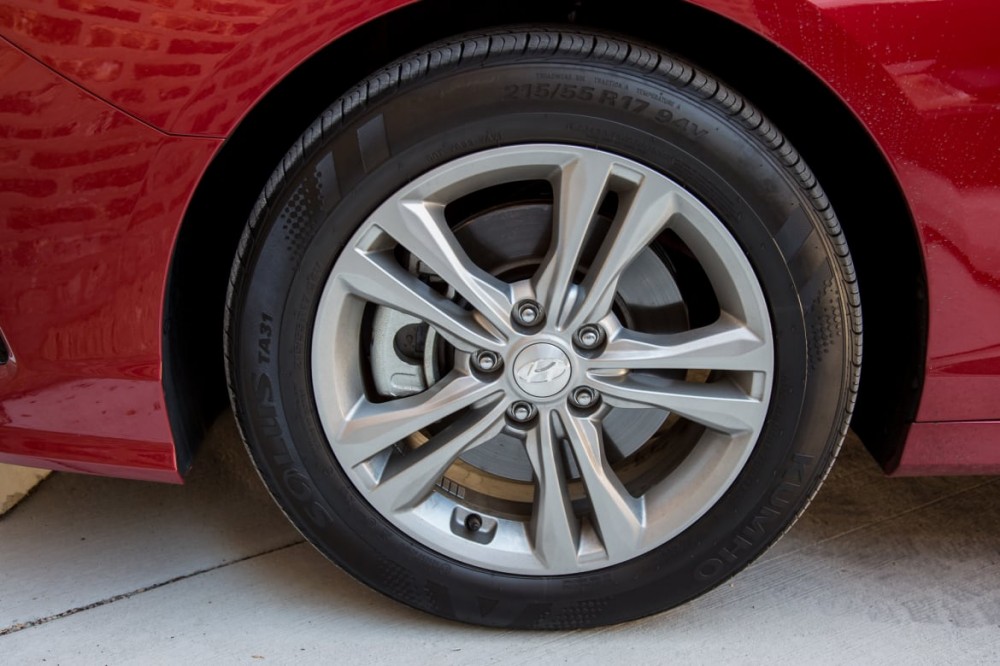
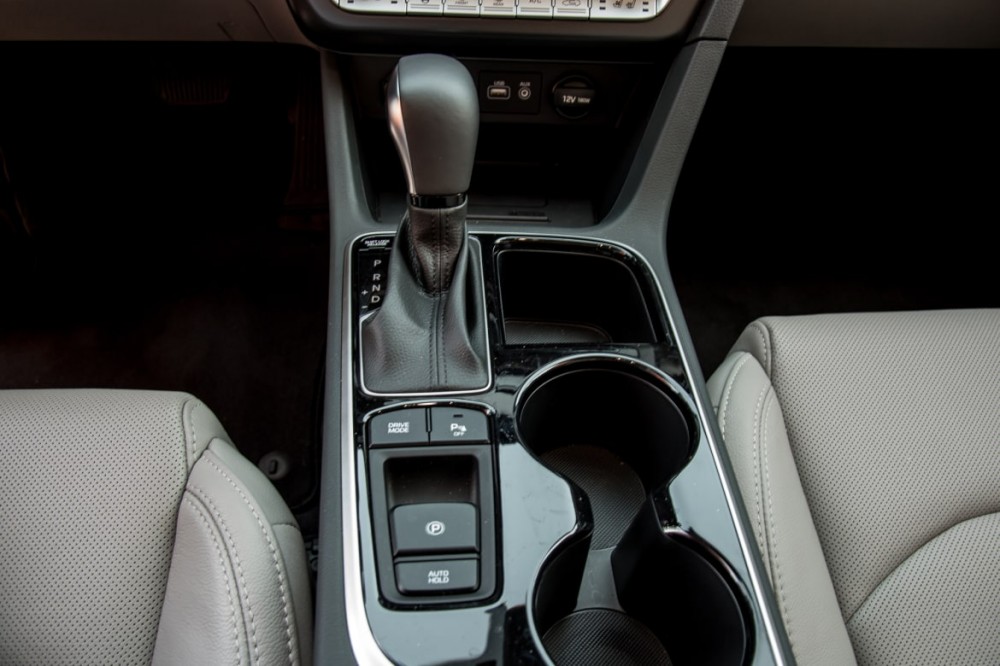
Tech Excellence and Free Connectivity
The Hyundai multimedia system is fast and among the most user-friendly ones you can get; it's equal to or better than anything in this class. Either touchscreen is clear and sharp, and the Sonata has standard Apple CarPlay and Android Auto integration. A convenient device bin on the front console has USB connectivity and 12-volt power. A wireless charging pad is available, and a USB connection has been added for the rear seat. For 2018, Sonatas come with three years of free Hyundai Blue Link service for remote starting, locking and cabin conditioning via smartphones or smart home speakers (such as an Amazon Echo). Models with navigation also get free map updates for three years. These free services are a value boost from the 2017, which had just a three-month free trial followed by costly subscriptions and updates.
Safety Features at a Price
The 2018 Sonata earned top ratings from the Insurance Institute for Highway Safety both for crashworthiness and collision prevention — but only with safety features available on SEL and Limited trims.
Blind spot warning and rear cross-traffic alert are now standard on all Sonatas. More sophisticated safety options include forward collision warning with automatic emergency braking up to 37 mph, plus pedestrian detection, lane keep assist and adaptive cruise control, but these features are confined to option packages on the SEL ($1,000 for the Tech Package) and Limited trims (in a $2,900 package with other features). The features are standard only on the Limited 2.0T, and they aren't offered at all on SE and Sport trims. This seems behind the curve: Rivals such as the Camry and Accord make a forward collision system standard on all trims for 2018.
Also available on the Limited and Limited 2.0T are new, standard LED headlights that earned a rating of acceptable from IIHS, bringing the Sonata more in line with its competition. (Compare IIHS mid-size sedan safety ratings here.) The Sonata's other headlight combinations still get a poor rating for 2018.
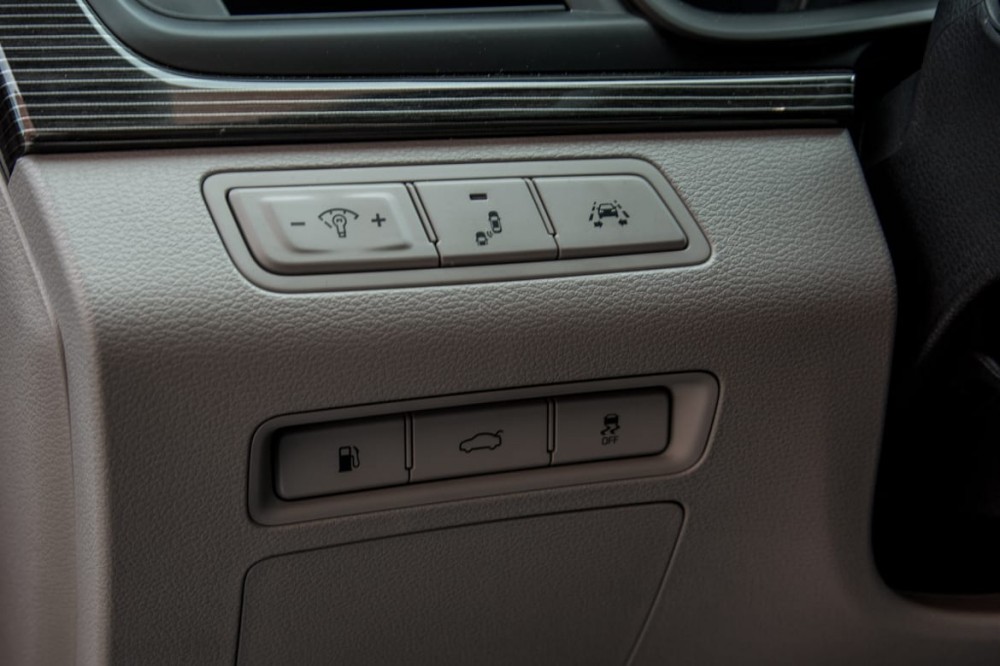
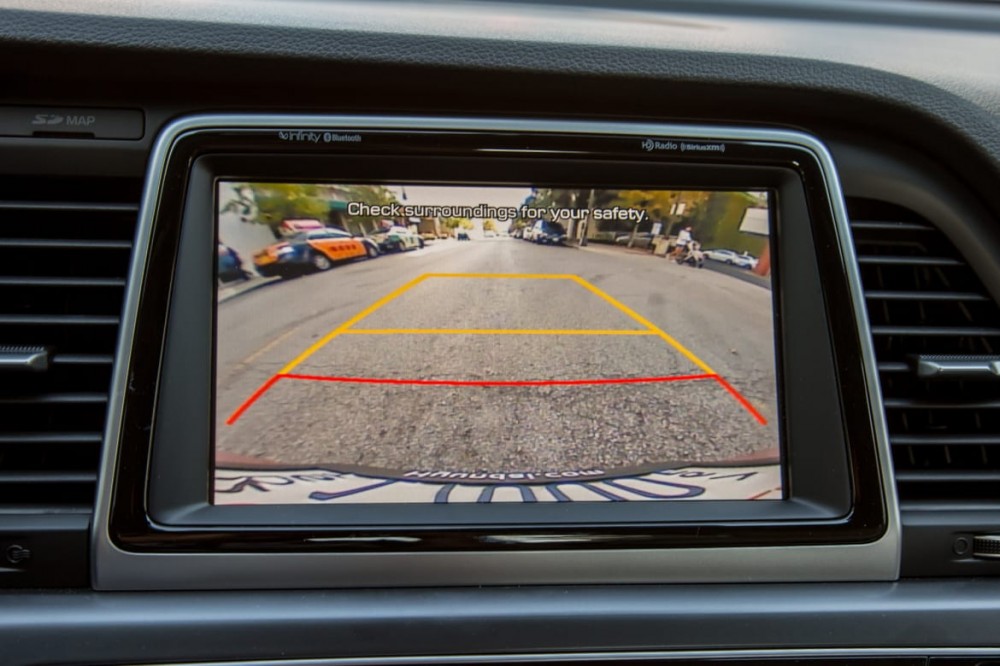
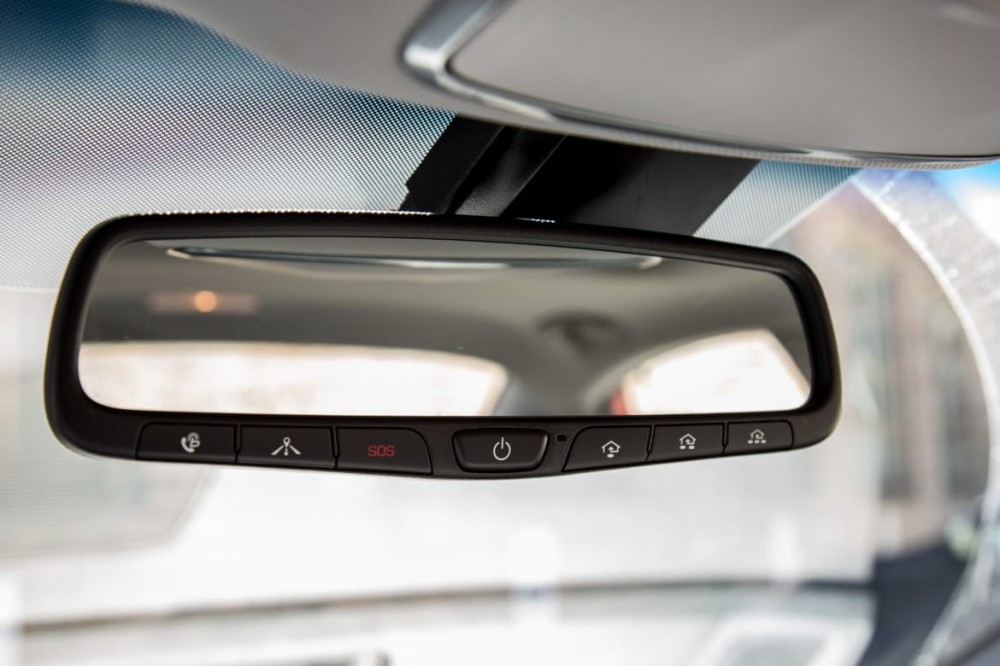
Raising the Value Play
Value is a core part of Hyundai's brand image, and while the Sonata might be just mid-pack in some ways, it's a leader in bang for the buck with its reconfigured pricing and trims for 2018. The SE model's price rose $100 to $22,935, including destination, but now includes standard blind spot warning and rear cross-traffic alert. It still undercuts rival starting prices like the 2018 Camry ($24,390) and Accord ($24,445). At the top end, a check-all-the-boxes Sonata Limited 2.0T got a price cut of $1,900 from 2017, down to $33,335 with destination. That flies well under the fanciest versions of those rivals.
Likely even more important for shoppers, the new SEL trim is positioned squarely in a value sweet spot, boasting a bucket of features for $24,585. It includes 17-inch alloy wheels (no plastic covers), LED daytime running lights, a proximity key with push-button start, a hands-free smart trunk opener, a 10-way power-adjustable driver's seat, heated front seats and a 7-inch media display with Apple CarPlay and Android Auto integration. Spend another $1,000 and you can add advanced safety technology to the SEL, including a forward collision system. Plus, like all new Sonatas, it includes three years of Blue Link app features and Hyundai's class-leading five-year/60,000-mile transferable warranty and 10-year/100,000-mile powertrain warranty.








